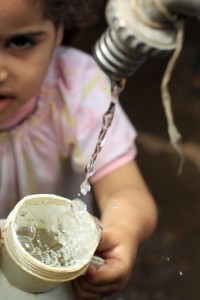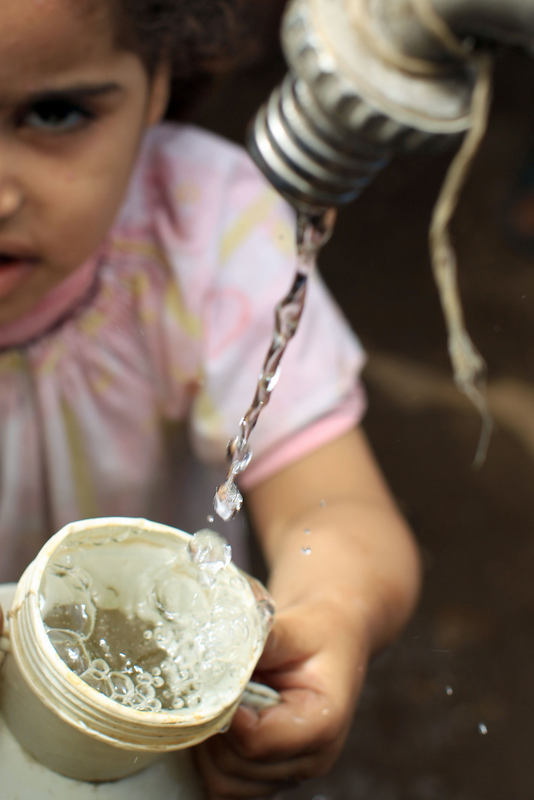
By: Lamia Nabil
The water available per person in Egypt is set to fall to half the amount estimated to represent the water poverty level, according to panelists at the 2nd Private-Public Partnerships Investment Summit held in Cairo on Monday.
“The global water poverty line is estimated as 1,000 cubic metres per person while in Egypt it is currently 700 cubic metres,” said Engineer El-Sayed Naser Arafat, Chairman of Holding Company of Water and Waste Water (HCWW). “We expect this to fall to 500cubic metres per person.”
The comments came during a panel discussion on the waste water and water treatment sector during the conference’s second day.
The panelists said that water supply in Egypt faced several challenges; the Egyptian government identifies water as one of the priority sectors which needs new approaches of financing and management for supply and sanitation projects.
“The existing water supply infrastructure either does not exist in some areas or, where it does, it needs drastic development,” said Dr Salah Bayoumi, head of projects for the HCWW. “Water supply payments in Egypt are estimated at EGP 0.23 per cubic metre.”
“This the first time that Egypt has had a specialised ministry for water and wastewater utilities,” he continued.
The panelists pointed to three sectors the Ministry is currently seeking to implement PPP projects for the re-use of wastewater, seawater desalination and sanitation.
They also affirmed the importance of desalination, in particular: “The upcoming PPP projects for desalination seek to develop desalination plants in four governorates,” Arafat said. “The Ministry has a five-year plan starting in 2012”.
In 2012, the Red Sea governorate produced 17,600 cubic metres per day of desalinated water, This is estimated to rise to 191,370 cubic metres per day in 2017, after cooperation with private sector companies.
Rises in desalination are also expected across other regions.
The Matrouh governorate produced 6000 cubic metres per day in 2012, estimated to rise to 72,000 cubic metres per day in 2017.
North Sinai produced 1,750 metres per day in 2012, estimated to rise to 21,750 cubic metres per day in 2017
South Sinai produced 42,000 cubic metres per day in 2012, estimated to rise to 73,000 cubic metres per day in 2017.
“The desalination field needs corporation on all levels, as it’s an extremely important sector in Egypt,” said Bayoumi. “The desalination sector witnessed huge improvements during the last few years, and its low cost profile makes it very attractive for investment.”
Other sectors such as agriculture can support or benefit from desalination, he also said, adding that Nile River water is “not economically effective and we have to find other sources to supply water to as many regions as we can”.
Capital needed to finance PPP desalination projects in the four provinces in 2012 started with EGP 1 bn. In 2017 the government will need a further EGP 3bn, which Arafat revealed would have to be supplied by the private sector.
“In 2022 we will hope to get EGP 5bn,” he said. “The desalination field is a promising one as we seek to promote PPP projects to attract more investment into this sector.”
Reused wastewater is estimated at 6.5 billion cubic metres per year in 2012, with potable water after treatment accounting for 3.7 billion cubic metres of this total amount, and disposable water without treatment accounting for 2.8 billion cubic metres.
Regarding re-use of rural sanitation, the panelists mentioned that Egypt’s rural areas currently account for half of the Egyptian population, with as 45 million people.
The panelists said that Egypt has 4,673 villages, but only 1,354 of these currently possess sanitation facilities. This represents 29% of total villages in the country and includes 480 villages provided with water treatment stations, which represent 19% of villages, and 874 villages without water treatment stations representing 10%.
Of those 3,319 villages without sanitation, only 1,023 have sanitation services currently under construction, while there are 2,296 village without “anything at all” in terms of sanitation prospects, representing 49% of this total.
Bayoumi added: “This is an incredibly important sector. A total of 45 million people lives in this country are affected by it, and it requires between EGP 75bn to EGP 85bn to implement adequate sanitation infrastructure projects over a period of ten to 15 years.”




